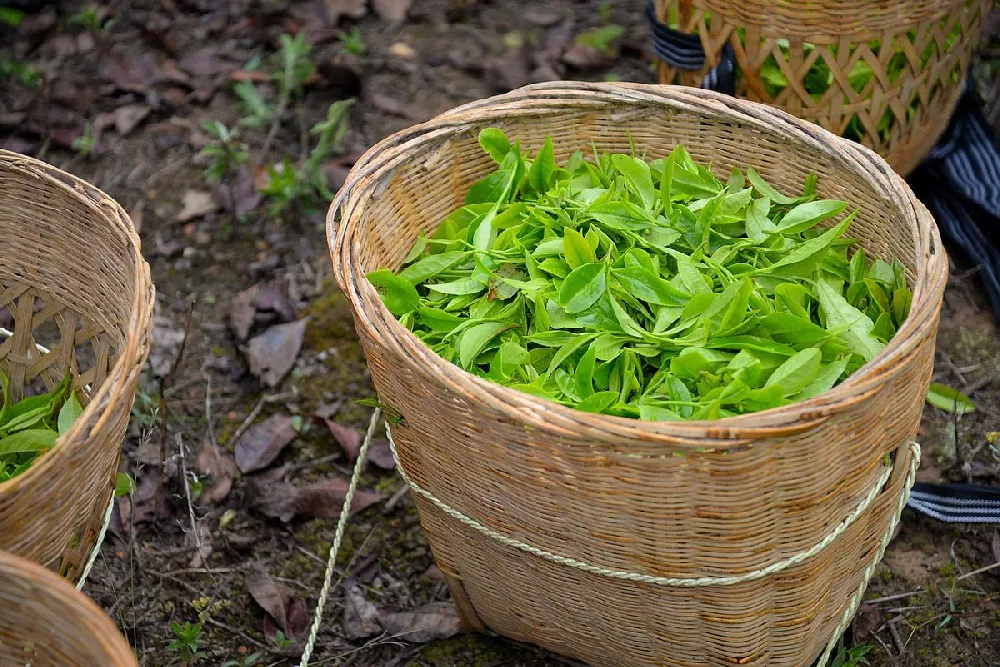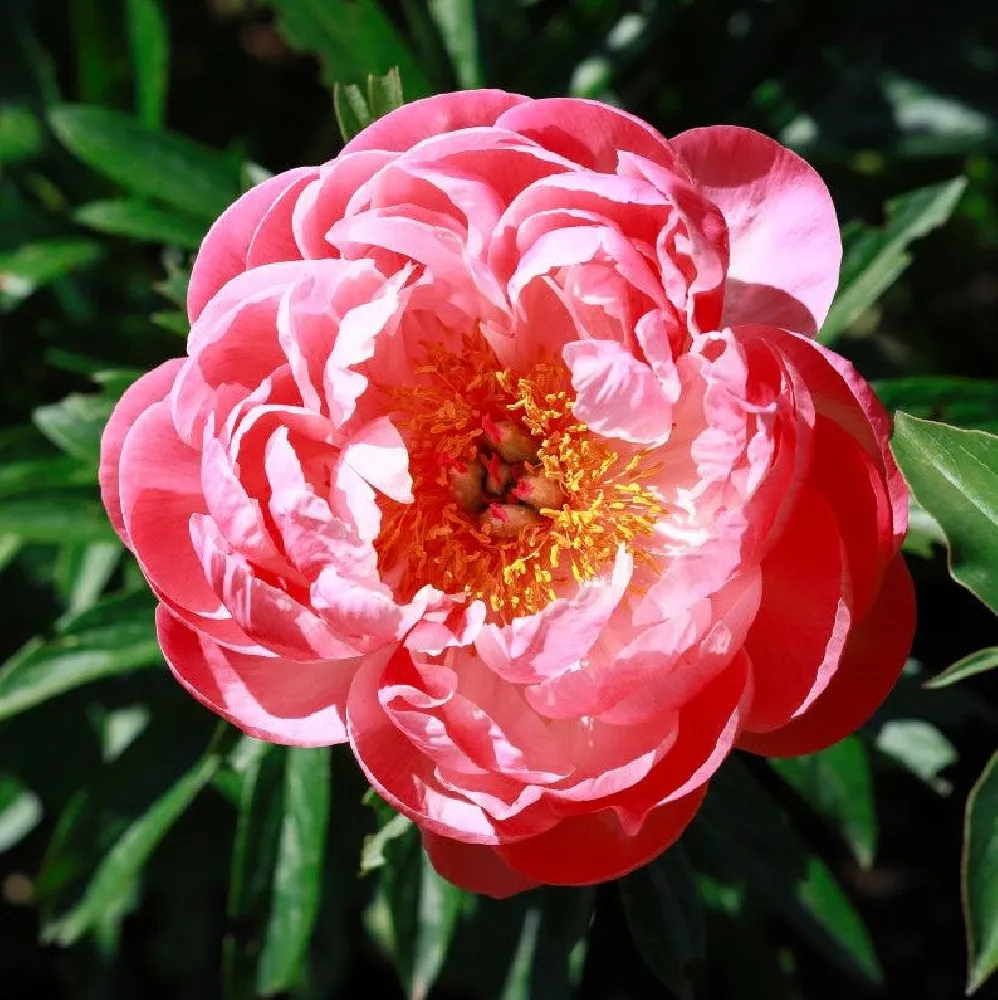Camellia Sinensis Tea Plant for Sale - Buying & Growing Guide
- Ships in 1-2 days
- 1-Year Warranty Eligible
- Pots or accessories are not included unless specified in the product options.
Shipping Details:
Products shipped through FastGrowingTrees.com. Once your order is shipped, you’ll receive an email with a tracking number and estimated delivery date. Most orders will ship immediately.
Camellia sinensis var. sinensis f. macrophylla, to give it its full botanical name, is an ancient plant native to Asia that has been used to produce a warming drink for at least 3,000 years. But Camellia sinensis is more than just a useful plant. This attractive evergreen, with its glossy dark green leaves, is an excellent landscape plant in warmer climates, where it can be used to create hedges or focal points in both formal and informal gardens. In northern climates, it is easily grown in containers, where it can maintain a smaller silhouette with some pruning. Here are other reasons to love Camellia sinensis:
- This long-lived plant can produce leaves for tea for up to 100 years.
- Does well in acidic soil and benefits from conditions similar to those needed for rhododendrons or blueberries.
- Small white flowers have a delicate fragrance.
Plant Care
Sunlight

Site your tea plant where it will get full sun — at least six hours of direct sunlight a day.
Watering
Water once a week with about 1 inch of water or whenever the soil feels dry 2 inches below the surface.
Fertilizing

Fertilize regularly throughout the growing season with a slow-release product intended for acid-loving plants.
Planting and Care
Planting instructions
Site your plant in full sun, six hours a day or more, and in well-draining, acidic soil with a pH of 6.5 or less. If you are planting more than one Camellia sinensis, space them at least 5 feet apart. Unpot your plant and tease out any encircling roots, which can girdle the shrub and eventually kill it.
Dig a hole that’s twice as wide and just as deep as the root ball. Place your shrub in the hole so that the top of the root ball is level with the soil grade. Fill in around the root ball with topsoil that’s been mixed with a growing medium designed for rhododendrons and other acid-loving plants. Tamp down the soil as you go to eliminate air pockets.
Once your shrub is planted, water thoroughly, aiming your hose at the root zone rather than the leaves. Mulch around the root zone with an organic product, such as bark chips, to conserve water.
Watering and nutrients
Unless you receive rain, give your tea plants a good soaking once a week, about one inch of water. If it’s very hot or you’re experiencing drought-like conditions, water twice a week. Avoid wetting the leaves, which can cause the plant to be susceptible to fungal diseases.
Fertilize throughout the growing season as per package directions with a balanced, slow-release product designed for acid-loving plants. Taper off fertilizing near the end of the growing season.
Pruning
Pruning is an important part of tea plant care. First, prune out any dead, diseased, or broken branches whenever you see them. You can also prune out select branches in the middle of the shrub to allow in more light and air. Once your Camellia sinensis is roughly 5 feet tall, begin pruning for size, cutting back new shoots in early spring. These new leaves can be dried and used to make tea. Make pruning cuts at a 45-degree angle just past a leaf node. Container-grown tea plants can be pruned to a manageable height annually after the shrub has bloomed.
Pests, diseases, and animals
Some of the diseases that may affect your Camellia sinensis include algal leaf spot, Camellia dieback and canker, and Camellia flower blight. All these are fungal in nature, and point to the need to plant your Camellia sinensis in soil that drains well and to water your plant at the root zone. Remove any diseased leaves, and keep the area around the plant clear of debris.
Pests that can bother tea plants include aphids, tea scale, and spider mites. These can be treated with horticultural oil, or you can treat your tea plant with judicious pruning if only a few branches are impacted. Avoid insecticides for all but the most severe infestations.
Harvesting
Harvest tea leaves after new growth appears in spring. Tea leaves are harvested manually by plucking off the buds and the two leaves below them. Younger leaves offer the best flavor. After picking, steam them briefly (one to two minutes) and then plunge into a bowl of ice water, so they retain their color. Spread the leaves out on trays to dry in the sun or use a dehydrator. You can also dry tea leaves in an oven set at 200 degrees Fahrenheit until completely dry.
Achieving maximum results
Although Camellia sinensis can be grown outdoors in the southern U.S., northern growers will need to grow their tea plants in containers so they can be brought inside when temperatures drop below 20 degrees Fahrenheit. Choose a container that is about twice the size of the root ball and which has adequate drainage holes, since these shrubs are prone to fungal diseases. Use a potting soil formulated for acid-loving plants like blueberries for the best results. When watering, never let the pot sit in standing water, but keep soil consistently moist, watering when the soil is dry 1 to 2 inches below the surface.
FAQs
Will I get green tea or black tea from my Camellia sinensis?
You have the option of either type. Almost all tea comes from Camellia sinensis — what differs is how the leaves are processed. Green tea is dried without allowing the leaves to oxidize, thus retaining their green color. Oolong and black tea leaves are oxidized, leading to a more robust flavor. Directions for processing your tea leaves can be found online.
How many plants do I need to harvest enough for my family?
That depends partly on how much tea you drink. Several shrubs should be enough for one or two people who drink tea daily. Tea leaves can be harvested throughout the growing season, every few weeks, as new leaves and buds emerge at the outer edges of the bush. Keep in mind that the tea leaves shrink considerably when they are dried and processed, so a bucket full of fresh tea leaves may only result in a liter or so of finished tea.
How old does my Camellia Sinensis have to be before I can harvest leaves?
You should be able to do a small, selective harvest after two years in the ground. Once the shrub is about 5 years old, it should be able to sustain regular harvesting during the summer months. Tea plants have a moderate rate of growth, and you will see robust growth if you keep the bush trimmed to encourage new buds and leaves.
Compare Similar Products
You can't add more Product Name - Product size to the cart.
OK









